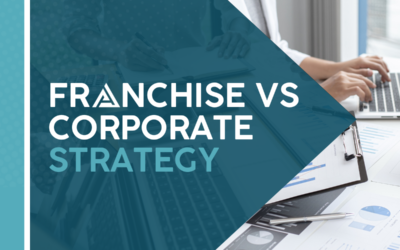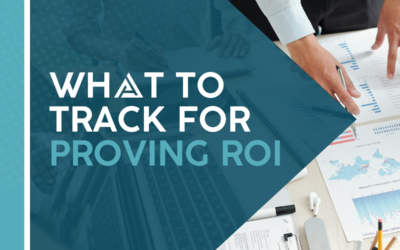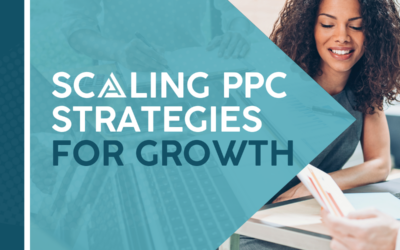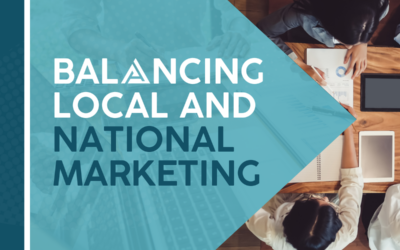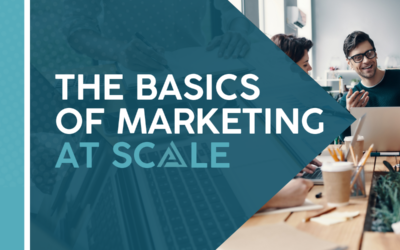Local SEO is the bedrock of digital visibility for multi-location businesses. The goal is simple: to have each branch or franchise appear in front of customers who are searching for their services. Over 80% of consumers perform a search before visiting a local business for the first time – you want each of your locations to appear, and appear at the top, in those local search results.
Unlike general SEO, local SEO focuses on meeting specific regional and local needs, and taking advantage of proximity and geo-signals to build authority through hyper-local strategies. For businesses that have multiple locations, the challenge becomes: how cany you scale these efforts while maintaining a consistent brand presence?
Or more simply put: how to treat each location as its own local business (and thus appear high in local search results), while simultaneously maintaining your core branding.
In this article, we’ll take a look at some time-tested strategies to master local SEO. Learn how to overcome the common challenges and pitfalls, and how to make your location pages really rank up, and you’ll be achieving a solid return on investment for each of your locations.
The Importance of Local SEO for Multi-Location Businesses
The focus of local SEO is to drive relevant traffic to your site, and to turn searchers into customers. You don’t just want to rank, you want to rank for the keywords that are actually relevant to your business, and have purchase or conversion intent. A well-optimized local SEO strategy can:
- Enhance Discoverability: Help customers find your business when they search for services near them, i.e. “near me” searches.
- Increase Foot Traffic: Drive customers to visit your physical brick-and-mortar locations by appearing in the Google Map Pack and local organic search results.
- Build Local Credibility: Boost trust with customers and the community through positive detailed reviews, accurate local listings, localized content and updates.
For multi-location businesses, optimizing each of your branch’s landing page or local site can give you a real competitive advantage in diverse or competitive markets, where other large brands might be out of touch with the local audience. Heck, many just end up too centralized in their outbound marketing, and their customer base is ripe for the taking.
Key Strategies for Local SEO Success
1. Optimize Google Business Profiles (GBP)
Your Google Business Profile (formerly Google My Business) is a cornerstone of your local SEO efforts. Each and every location must have an optimized Google Business Profile to appear in the “Local Pack” or “Map Pack” and Google Maps results.
Consider this: On mobile devices, the Map Pack takes up the entire width of the screen, and is the first thing people see after Ads, in a local search. The Map Pack gets over 50% of clicks, for local searches, and this figure increases every year.
Action Steps:
- Claim and verify GBPs for all locations.
- Make sure that NAP (Name, Address, Phone) is consistent across all profiles and locations (and that it matches the website).
- Add high-quality images and videos showcasing each location, with the right meta tagging.
- Regularly update your business hours, attributes, and services offered whenever there are changes.
- Use Google’s ‘posts’ feature to share promotions, events, or updates regularly, with links back to your website as the call to action.
Pro Tip: Use Google’s “Products” and “Services” features to highlight offerings you have that are specific to each location – this helps visibility in relevant local searches.
2. Create Unique Location Pages
A generic “Find Us” page won’t work for local SEO. Every location needs to have a dedicated, comprehensive landing page that is optimized for specific local keywords, local services, and both regional and local information. And they have to be unique. There is no way around this.
Action Steps:
- Include location-specific keywords, like “home health care services in [City]” or “best doctor in [Neighborhood].”
- Use unique location-specific content like testimonials, staff bios, and stories about the community and events.
- Embed Google maps on every single location page, and include accurate address and contact details.
- Use structured data markup (Schema.org) to help search engines understand location-specific details. This also applies to AI search!
Example: A chain of ABA therapy providers could create individual pages highlighting unique amenities, treatment options, and expertise at each branch, with leading staff members featured to lend more local authority to the pages.
3. Encourage and Manage Online Reviews
Reviews are one of the top local ranking factors and drivers of conversions, and that’s because they are a top key trust signal for potential customers.
You read reviews. I read reviews. We all do it. And that’s why Google puts such value on them.
Encouraging feedback, and managing and responding to both positive and negative reviews can significantly impact your visibility and reputation. This one is up front in everyone’s faces – you have to keep your review management at the forefront of your priorities.
Action Steps:
- Request reviews from satisfied customers through email, SMS, or in-store prompts. Think about automating the review request process.
- Respond to ALL reviews – both positive and negative. This shows that you care.
- Encourage the use of location-specific keywords in reviews, and use them in your responses to improve local relevance. Google pulls location keywords from reviews and places them in Map Pack search results. Don’t miss out on this one.
- Monitor review platforms beyond Google, like Yelp, Facebook, and any industry-specific sites.
Pro Tip: Take a look at review management platforms like Podium or BirdEye. These streamline review collection and help with monitoring across all of your locations.
4. Local Link Building
Backlinks are another important SEO factor, and local links do carry extra weight for multi-location businesses. Don’t let the page authority on your location pages fall to the wayside.
Action Steps:
- Partner with local organizations, or donate to charities to earn links from their websites to yours.
- Sponsor community events and request that your website link is on any digital promotion materials.
- List your business in regional directories and any niche industry platforms related to your business.
- Write guest posts on other blogs or online publications and magazine, or try to collaborate with local influencers.
Example: A restaurant chain could sponsor local food festivals, earning links from event pages and press coverage around town. Each link would be a valuable backlink that contributes to better ranking in search.
5. Invest in Localized Content Marketing
High-quality content that’s custom-made for your local audiences will drive organic traffic, and also help to improve customer engagement and trust.
Action Steps:
- Create interesting blog posts addressing local interests, like “Top 10 Family Activities in [City]” or “How to Prepare for Winter Plumbing Issues in [Region].”
- Develop video content that highlights local events and customer stories.
- Incorporate FAQs that are specific to each location, and address common questions that might differ from location to location (Think: “Is there parking here?”)
Pro Tip: Use Google Search Console to identify popular search terms by location, and then adjust your content accordingly.
Common Challenges in Scaling Local SEO
1. Maintaining NAP Consistency
Inconsistent business information in different directories can confuse search engines, and this will definitely hurt your local rankings.
Solution: Use tools like Yext or BrightLocal to manage and synchronize listings across many platforms at once. Make sure that you get listings for each of your locations, not just your main business!
2. Avoiding Keyword Cannibalization
When multiple location pages have content that ranks for the same keyword, search engines get confused. This is called cannibalization, and it has two effects: It can hurt your SEO efforts by getting your content demoted, and it can also confuse users if they end up on the wrong page, relative to what they searched for.
Solution: Optimize each of your pages for unique keywords, and double-check to make sure that each page targets a specific audience or specific service area, and doesn’t stray into other keywords that you’re ranking for elsewhere.
Measuring ROI for Local SEO
Proving ROI is the ultimate goal, and it’s the key to justifying the investment in local SEO. Track these key metrics:
- Organic Traffic: Measure visits to location-specific pages, all tracked by source.
- Search Rankings: Track visibility for location-based keywords. Using keyword and local Map Pack rank tracking software like BrightLocal, Local Falcon, Local Viking, Keyword.com – many exist.
- Conversion Rates: Monitor the conversion rates on events like form submissions, calls, or direction requests, both from your Google Business Profiles and the website. These micro-events at the local level can tell a very detailed story if analyzed properly.
- Review Sentiment: Analyze your customer feedback trends as a whole, and look at this over time. Identify any areas where review sentiment is repeatedly low – you may have a problem at that location.
- Revenue Attribution: Use tools like call tracking or unique UTM codes to attribute the local SEO efforts to sales and conversions.
Example: A daycare chain tracked a 25% increase in enrollments after switching to more localized content and improving the ranking for their GBP profiles, attributing $150,000 in revenue to their local SEO efforts.
Final Thoughts
Local SEO definitely isn’t a “set-it-and-forget-it” strategy – that’s not going to get you anywhere. Local SEO is a dynamic process that needs continuous optimization, and it needs constant adaptation. For multi-location businesses, mastering this means going beyond the basics and creating strategies that are unique to each and every market. From creating localized content to managing and pushing for Google reviews, these efforts are what is going to continuously drive local visibility, and build trust in the communities you serve..
Investing in scalable local SEO strategies can do a lot to help your business dominate local search results. This is what brings in high-intent customers, and thus lays a solid foundation for sustainable growth in all of your locations.
Up next, we’ll cover the power of paid advertising, and how to maximize ad impact for multi-location businesses. When you pair PPC with great local SEO, you’ll be going yet another step further to dominate your local markets.




